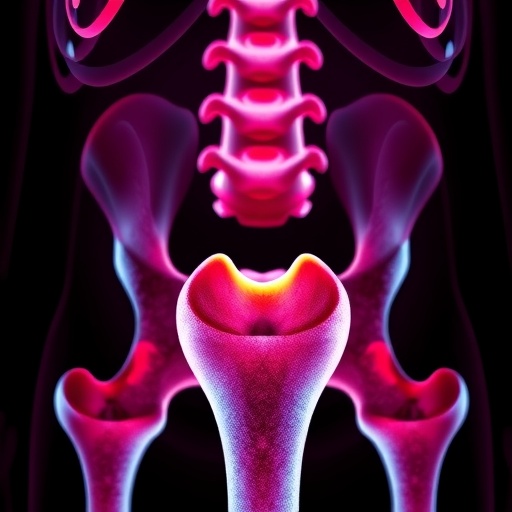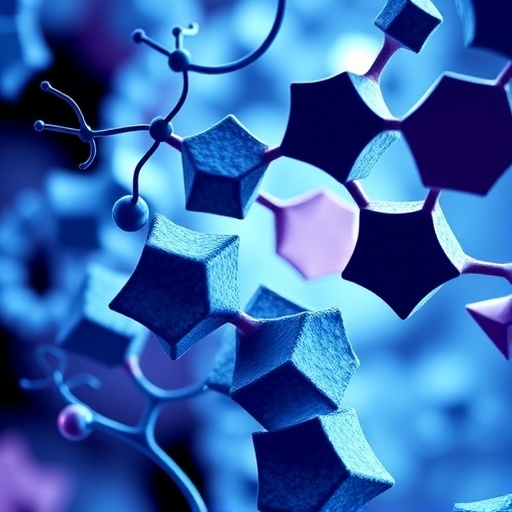Ferroptosis, a distinctive and tightly regulated form of cell death, has rapidly gained attention in the oncology community due to its potential as a therapeutic target in cancer treatment. Unlike apoptosis or necrosis, ferroptosis is characterized by iron-dependent lipid peroxidation leading to the rupture of cell membranes and mitochondrial dysfunction. These hallmark events culminate in the catastrophic failure of the cell’s structural integrity. Despite its emerging role in suppressing tumorigenesis, the intricate regulatory mechanisms governing ferroptosis in various cancers, particularly renal cell carcinoma (RCC), remain insufficiently elucidated. Recent research led by Dr. Meng Zhang and colleagues at the Cancer Institute of Xuzhou Medical University breaks new ground by unveiling the critical involvement of PRMT5-mediated methylation of ACSL4 in modulating ferroptosis resistance in RCC.
Renal cell carcinoma is the predominant malignancy affecting the kidneys, representing approximately 85% of adult renal cancers. Its notoriously poor prognosis and limited treatment options have propelled research efforts toward understanding the molecular underpinnings of RCC progression and therapy resistance. Ferroptosis is now recognized as a promising pathway for cancer suppression, and previous studies have implicated acyl-CoA synthetase long-chain family member 4 (ACSL4) as a pivotal executor of this cell death modality. ACSL4 catalyzes the esterification of polyunsaturated fatty acids into membrane phospholipids, thereby sensitizing cells to ferroptotic induction via lipid peroxidation. However, the molecular mechanisms that regulate ACSL4’s stability and function in RCC have yet to be fully defined.
Protein arginine methyltransferase 5 (PRMT5) is a member of the PRMT family that catalyzes the symmetrical dimethylation of arginine residues on target substrates. PRMT5 has been increasingly recognized as an oncogenic driver implicated in numerous cancers, including RCC, through epigenetic and post-translational modifications. These modifications modulate protein function, gene expression, RNA processing, and signal transduction acting as critical regulators of tumor cell biology. Dr. Zhang’s research team hypothesized that PRMT5 exerts control over ferroptosis in renal cancer cells by modulating ACSL4 through arginine methylation, thus influencing RCC proliferation and survival via ferroptosis resistance mechanisms.
The study employed a comprehensive experimental approach utilizing RCC cell lines, patient-derived tumor samples, and in vivo animal models to dissect the functional relationship between PRMT5 and ACSL4 in ferroptosis regulation. An extensive screening of approximately 765 epigenetic compounds was conducted to identify novel modulators influencing ferroptosis in renal cancer cells. Subsequent molecular assays included cell viability analyses, protein expression profiling, methylation detection techniques, and ferroptosis-specific markers monitoring. The combinatorial methodologies allowed the researchers to delineate how PRMT5-dependent methylation at arginine 549 destabilizes ACSL4, thereby attenuating its pro-ferroptotic activity.
Mechanistically, the researchers revealed that PRMT5 symmetrically dimethylates the arginine residue located at position 549 on ACSL4 (meR549-ACSL4). This post-translational modification flags ACSL4 for proteasomal degradation through its enhanced binding affinity with UBR5, an E3 ubiquitin ligase central to protein turnover regulation. The diminished ACSL4 protein stability translates into decreased lipid incorporation of polyunsaturated fatty acids, subsequently suppressing lipid peroxidation and ferroptotic processes. As a result, RCC cells acquire ferroptosis resistance, which promotes tumor cell survival and potential expansion.
The implications of this regulatory axis were further corroborated by experiments involving PRMT5 inhibition. When PRMT5 expression was pharmacologically or genetically suppressed, a significant restoration of ACSL4 stability was observed, alongside marked increases in ferroptosis induction in renal cancer cells. This reversal of ferroptosis resistance not only reduced tumor cell viability but also sensitized RCC cells to immunotherapeutic treatments such as programmed death-1 (PD-1) blockade. The synergy between ferroptosis enhancement and immunotherapy opens new therapeutic vistas for refractory RCC.
Among the exciting therapeutic insights, the study identified GSK3326595, a specific and potent PRMT5 inhibitor, as a promising candidate to harness ferroptosis-mediated antitumor effects. The integration of GSK3326595 with PD-1 immune checkpoint inhibitors demonstrated marked tumor suppression in preclinical models. This combinatorial approach leverages the dual benefits of directly triggering ferroptotic cell death and invigorating antitumor immunity, a strategy with the potential to surmount therapy resistance barriers prevailing in RCC treatments.
The newfound role of PRMT5 as a modulator of ferroptosis also raises broader questions about epigenetic and post-translational modifications in cancer biology. Targeting arginine methylation provides a novel dimension for therapeutic intervention that extends beyond gene expression to the dynamic modulation of protein stability and function. This research underpins an increasingly appreciated intersection between epigenetic regulatory enzymes and cell death pathways, presenting fertile ground for future drug development initiatives.
Importantly, this investigation employed patient-derived data and animal models to confirm the clinical relevance of the PRMT5-ACSL4-ferroptosis axis in RCC prognosis. Elevated PRMT5 expression correlated with poorer patient outcomes, consistent with its role in promoting ferroptosis resistance and tumorigenic potential. These translational findings propel this research beyond basic science into the realm of clinical oncology, laying the foundation for future trials aimed at evaluating the safety and efficacy of PRMT5 inhibitors as adjuncts to existing kidney cancer therapies.
Ferroptosis, originally conceptualized less than a decade ago, is increasingly recognized as a fulcrum for novel cancer therapeutic strategies, particularly in malignancies that evade apoptosis. This study provides critical evidence positioning PRMT5-mediated arginine methylation of ACSL4 as a fundamental mechanism by which renal cancer cells subvert ferroptotic cell death. Furthermore, it elucidates a promising pharmacologic target—PRMT5 inhibition—to overcome ferroptosis resistance and enhance immunotherapy efficacy in RCC.
Given the complexity of ferroptosis regulation and tumor immunology, further in-depth mechanistic studies and clinical evaluations are necessary to validate and optimize the therapeutic strategies proposed. Nevertheless, the findings reported by Dr. Zhang’s team constitute a paradigm shift that integrates epigenetic modulation with ferroptosis-based interventions, potentially heralding a new era in cancer treatment focusing on overcoming resistance through combined metabolic and immune-targeted therapies.
In conclusion, the elucidation of PRMT5’s methylation of ACSL4 at arginine 549 as a critical suppressor of ferroptosis resistance not only advances our molecular understanding of RCC biology but offers an actionable target for innovative treatment modalities. The prospect of combining PRMT5 inhibitors with immune checkpoint blockade therapies represents a promising development in precision oncology, poised to improve outcomes for RCC patients who currently face limited therapeutic options.
Subject of Research: Cells
Article Title: PRMT5-Mediated Arginine Methylation of ACSL4 Attenuates Its Stability and Suppresses Ferroptosis in Renal Cancer
News Publication Date: 1-Aug-2025
Web References: http://dx.doi.org/10.34133/research.0789
Image Credits: Wellcome Collection via the Creative Commons Search Repository
Keywords: Ferroptosis, Renal Cell Carcinoma, PRMT5, ACSL4, Arginine Methylation, Lipid Peroxidation, Protein Stability, Immunotherapy, Tumor Suppression, Epigenetic Regulation, GSK3326595, PD-1 Blockade




